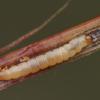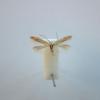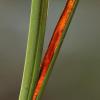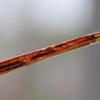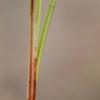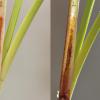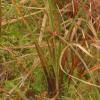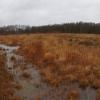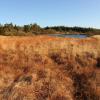35.076 Monochroa suffusella (Douglas, 1850)
Status and Distribution
Very local with widely scattered records from across England north to Yorkshire, parts of western Wales, Ireland and Northern Ireland. New to VC69 Westmorland (south Cumbria) in 2019 (C. Lewis pers. comm.). Not noted in south-west England, Scotland, Isle of Man or the Channel Islands.
A few confirmed, single and isolated records, away from colonies on raised lowland bogs, fenland or coastal wetland are difficult to explain (eg Buckinghamshire, Middlesex and Worcestershire) and may reflect the use of habitat types other than those the moth is normally associated with, or to vagrants.
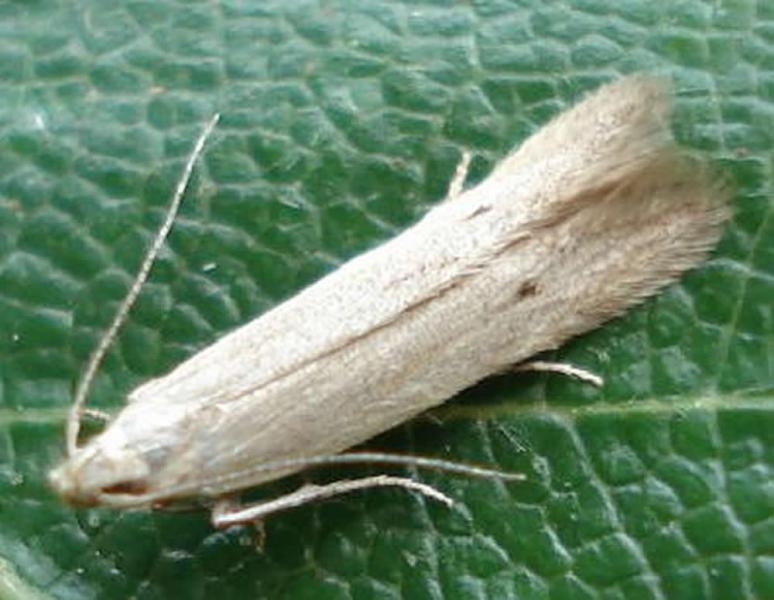
Provisional map
Imago
Pupa
Foodplant and Larval Feeding Signs
Eriophorum angustiflium (common cottongrass), see plant distribution map, although this plant does not occur at the moth's Wicken Fen site. Two specimens were bred from collected, dead stems of a Scirpus sp. (club rush) on a saltmarsh in Essex. It is suggested that the larvae may not necessarily have been feeding on this.
The larva overwinters within the stems.
The following additional notes (merged and edited) have been kindly supplied by Will Langdon (July 2022) following breeding several of this species in Britain:
Feeding signs in March were exactly the same as in January and the larvae hadn't started feeding any higher up than the base of the leaves. When rearing the larvae they can construct long or shorter mines. Most plants had multiple (old) mined leaves, suggesting that larvae might be switching leaves, which did tally with what I saw in captivity. These old mined leaves turn brown and die very quickly, so they aren't particularly obvious in the field, I just noticed them when I got home and examined the plants carefully in good light. One plant contained two larvae. I wasn't able to find the pupae which weren't off the plant in the pot, so must have been either in the mine or inside the plant somewhere. At his early satge, most of the mine is in the paler base of the leaf (below the surface of the sphagnum moss the plant was growing in) and not visible.
The larva has a pale brown head, a whitish body with a faint yellow tinge and a pitted texture. None of the larvae had a black lateral spot on thoracic segment one. This compares with one larva with this spot, found, and identified via DNA, in Lancashire. The presence or absence of the spot may therefore be instar-related.
Will Langdon pers. comm.
Finding the Moth
Larva: mines the stem and lowest parts of the leaves in the autumn, overwintering in the mine. In Spring it initially mines the reddish portion at the base of an overwintering leaf making an obscure, pale red, short, sinuous gallery in which the larva is invisible. It then moves into the green part of the leaf where the gallery becomes pale green and widens filling all or most of the width of the leaf (length 20-65mm). The larva and its greenish frass are still only barely visible and only when viewed from above, or when backlit. It appears not to change leaves, although this has been observed in captivity (W. Langdon pers. comm.) and exits the leaf, once full fed, through a whole cut in the upperside of the leaf.
The moths' habitat at a mire restoration site in Somerset (W. Langdon pers. comm.) suggested a preference for the larger Cotton Grass plants growing on the drier hummocks along the edge of the two wet ditches. This may reflect a preference on the part of the moth, or simply that these plants are much easier to search, with more of the base of the leaves visible.
Adult: can be disturbed from cottongrass during the day, flies in the evening and later comes to light. Has been observed flying over pools at sunset before settling on grasses and cotton-grass.
Similar Species
There is some variability in the wingspan (10-14mm) and forewing grond colour (from whitish ochreous to a deeper ochreous colour). The palps are whitish ochreous mixed with some fuscous on the outer sides and is fuscous at the apex. On the forewing there is a black costal spot above a central blackish spot at three-quarters. When at rest on the cottongrass stems it resembles a Coleophorid moth.
Single brooded from late May to the end of July. There is one record from late August.
Earliest:6th May 1969 (VC11)
Latest: 25th August 1999 (VC9)
It has been suggested that the Wicken Fen moths fly slightly later than those elsewhere. This is not borne out by some of the records received from Cheshire, southwards to Hampshire (excluding Cambridgeshire) where it has been reported during the second half of July (17th to 30th) and even into late August (Hampshire).

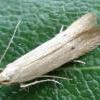
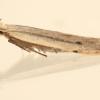
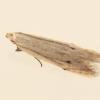
%20%20Co.%20Clare%20L%20Evans.jpg)

